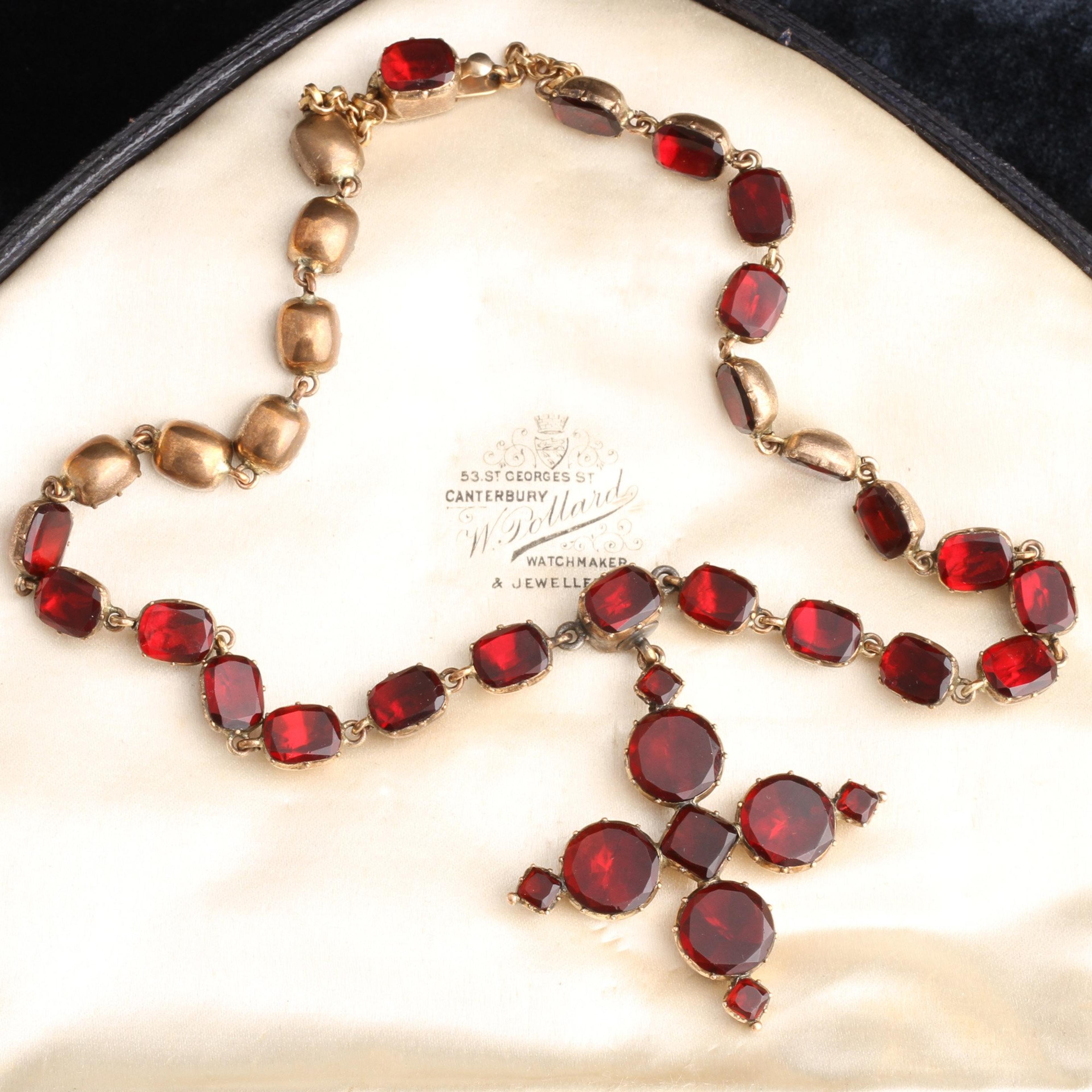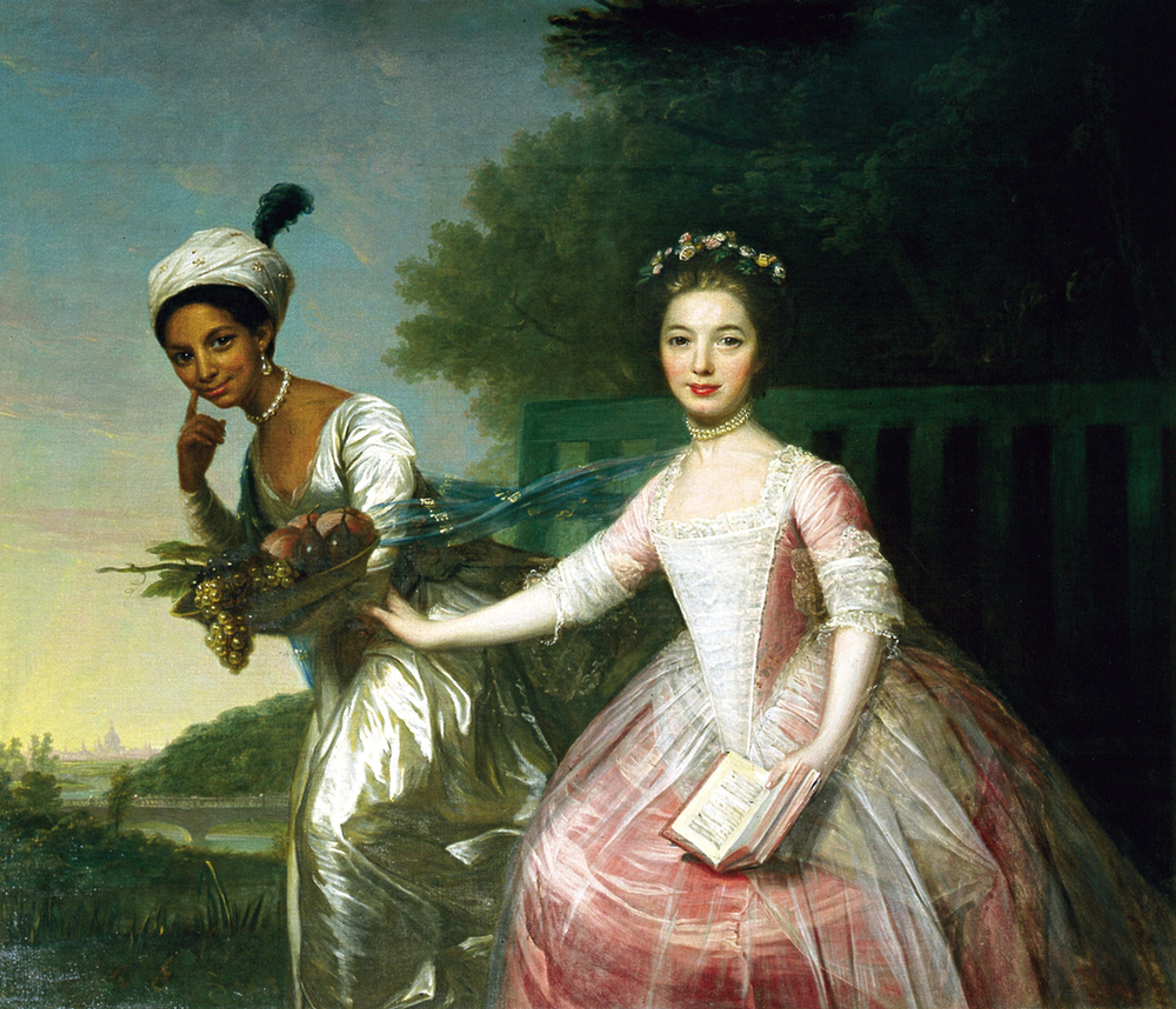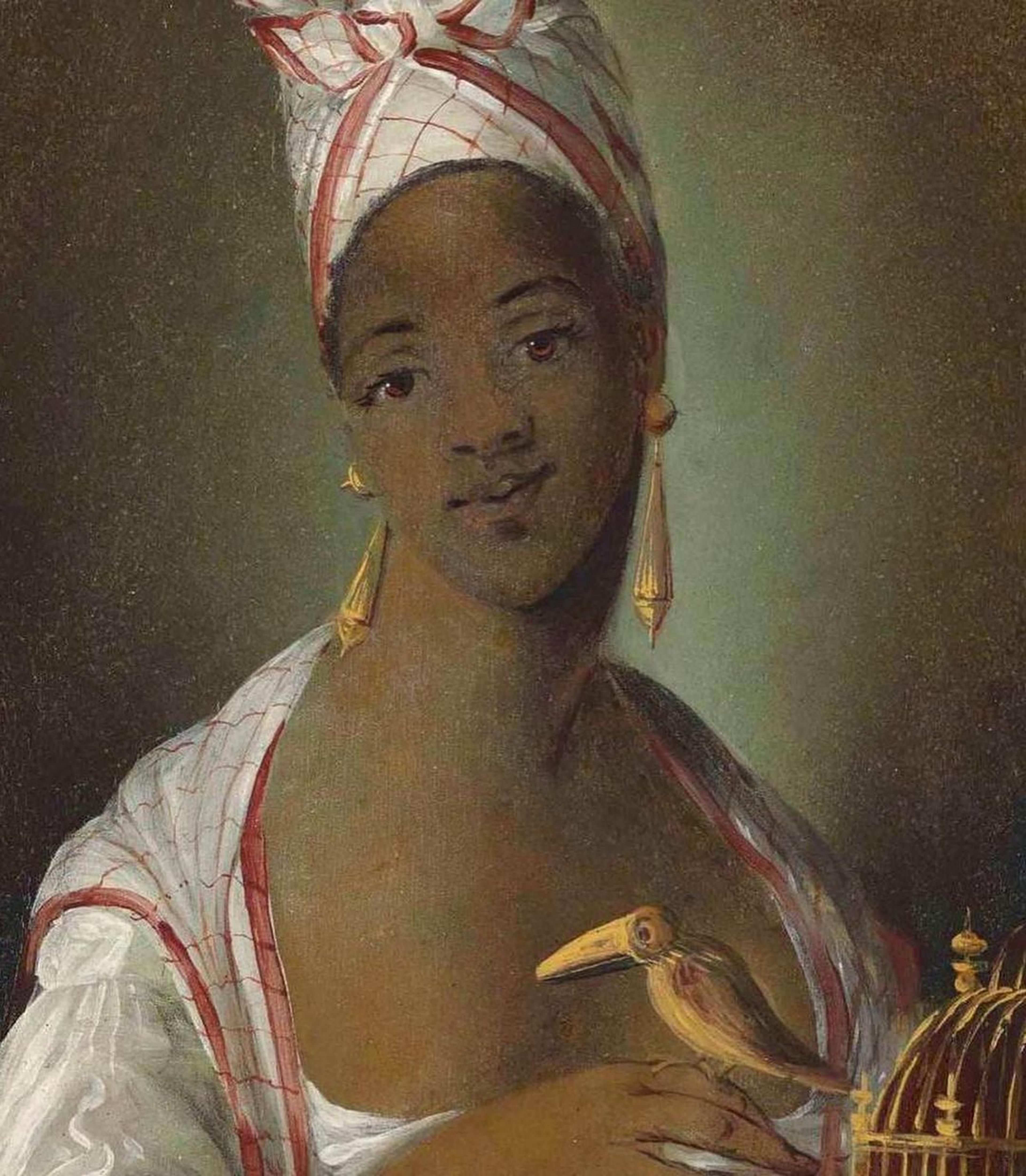
The rivière - one of the most popular and enduring styles of necklace to come out of the Georgian period - features an endless line of matched or subtly graduated gems set within inconspicuous collets. The necklaces supposedly take their name from the French Riviera: it is said that the lights along the coastline resembled a dazzling necklace when viewed from the sea. This c. 1800 rivière fis composed of deep red paste stones in crimped collets with closed and foiled backs with a stylized pendant cross. The necklace is fashioned from gilt pinchbeck and measures 15" (the chain at the back was added at some point to extend the length).
thedetails
- Materials
Gilt pinchbeck, red paste, 9k chain.
- Age
c. 1800
- Condition
Very good - chain was added at some point to extend the length of the necklace; the clasp was broken and we have had the tongue groove repaired as well as made a repairs to the loops of the setting which holds the cross.
- Stone
15" length, 1 3/4" cross.
Need more photos?
Send us an email to request photos of this piece on a model.

Aboutthe
GeorgianEra
1714 — 1837
As imperialist war raged in the Americas, Caribbean, Australia, and beyond, the jewelry industry benefited: colored gems from all over the empire became newly available. A mix of artistic influences from around Europe contributed to the feminine, glittering jewels of the era. Dense, ornate Baroque motifs from Italy showed up in Georgian jewelry, as did French Rococo’s undulating flora and fauna. Neoclassical style made use of Greek and Roman motifs, which were newly popular due to the recently uncovered ruins of Pompeii and Herculaneum. Lapidary methods improved: the dome-shaped rose cut was popular, as was the “old mine cut,” a very early iteration of today’s round brilliant cut.
The boat-shaped marquise diamond cut was developed around this time, supposedly to imitate the smile of Louis XV’s mistress, the marquise de Pompadour. Paste — an imitation gemstone made from leaded glass — was newly developed in the 18th century, and set into jewelry with the same creativity and care as its more precious counterparts. Real and imitation gems were almost always set in closed-backed settings, lined on the underside with thin sheets of foil to enhance the color of the stone and highlight it's sparkle. This makes Georgian rings tough for modern women to wear, especially on an everyday basis: genteel, jewelry-owning ladies of the 18th century were not famous for working with their hands like we are. Nor did they wash their hands as much as we do. Water will virtually ruin a foiled setting, so take special care with your Georgian ring. Very little jewelry from this period is still in circulation, and it's very difficult to repair.
